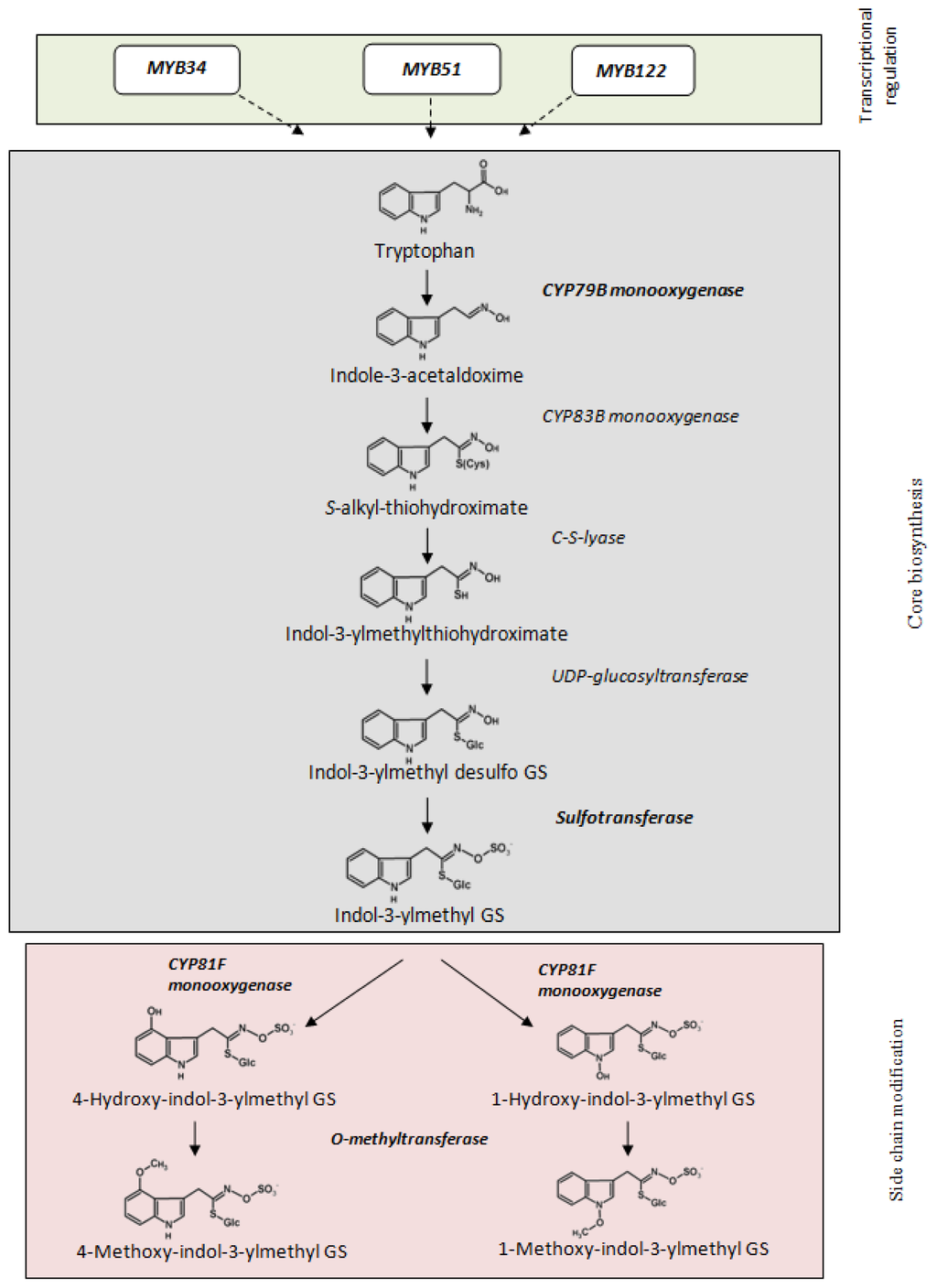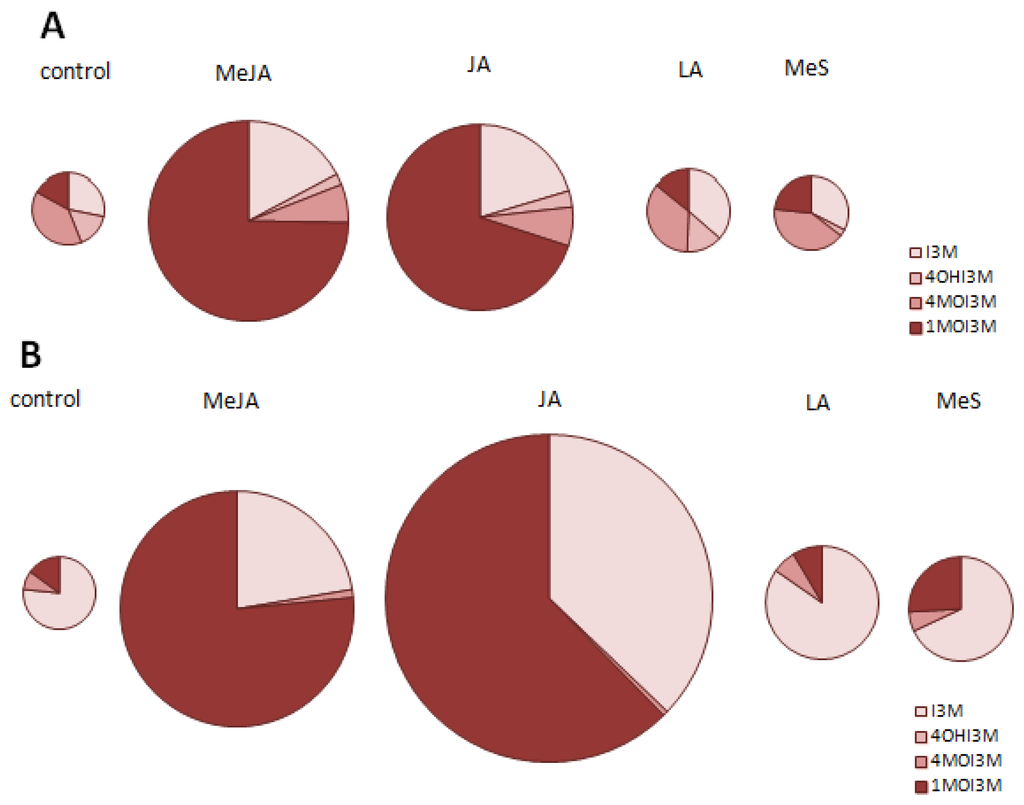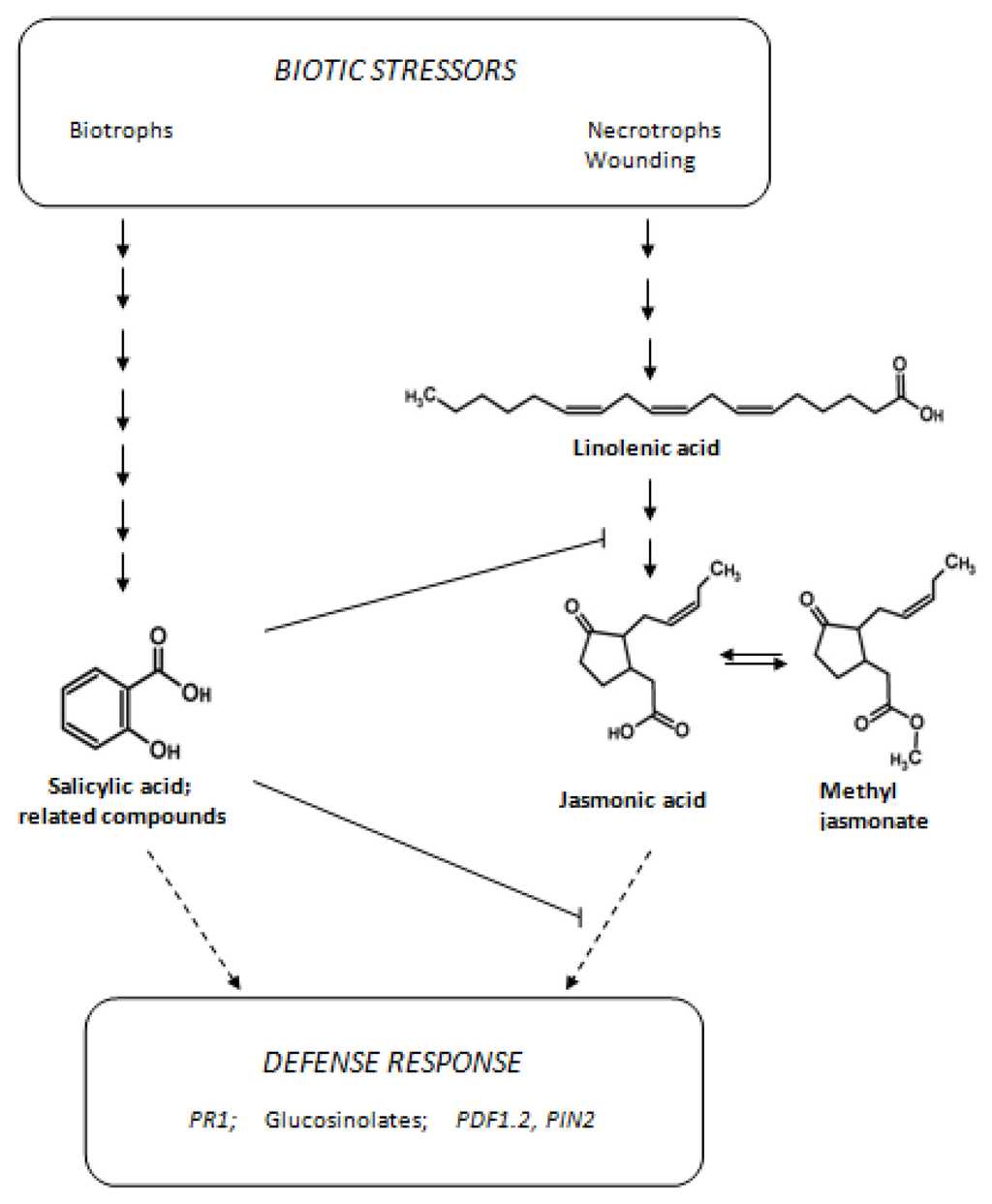Wiesner, M.; Hanschen, F.S.; Schreiner, M.; Glatt, H.; Zrenner, R. Induced Production of 1-Methoxy-indol-3-ylmethyl Glucosinolate by Jasmonic Acid and Methyl Jasmonate in Sprouts and Leaves of Pak Choi (Brassica rapa ssp. chinensis). Int. J. Mol. Sci. 2013, 14, 14996-15016.
Abstract
Pak choi plants (Brassica rapa ssp. chinensis) were treated with different signaling molecules methyl jasmonate, jasmonic acid, linolenic acid, and methyl salicylate and were analyzed for specific changes in their glucosinolate profile. Glucosinolate levels were quantified using HPLC-DAD-UV, with focus on induction of indole glucosinolates and special emphasis on 1-methoxy-indol-3-ylmethyl glucosinolate. Furthermore, the effects of the different signaling molecules on indole glucosinolate accumulation were analyzed on the level of gene expression using semi-quantitative realtime RT-PCR of selected genes. The treatments with signaling molecules were performed on sprouts and mature leaves to determine ontogenetic differences in glucosinolate accumulation and related gene expression. The highest increase of indole glucosinolate levels, with considerable enhancement of the 1-methoxy-indol-3-ylmethyl glucosinolate content, was achieved with treatments of sprouts and mature leaves with methyl jasmonate and jasmonic acid. This increase was accompanied by increased expression of genes putatively involved in the indole glucosinolate biosynthetic pathway. The high levels of indole glucosinolates enabled the plant to preferentially produce the respective breakdown products after tissue damage. Thus, pak choi plants treated with methyl jasmonate or jasmonic acid, are a valuable tool to analyze the specific protection functions of 1-methoxy-indole-3-carbinole in the plants defense strategy in the future.
Figure. Signaling molecules involved in defense against biotic stressors. Investigated molecules are marked in bold. PR1, PATHOGENESIS-RELATED 1; PDF1.2, DEFENSIN-LIKE 16; PIN2, PROTEINASE INHIBITOR II.

Figure. Biosynthesis of indole glucosinolates in Arabidopsis. Transcriptional regulators, enzymatic steps involved in core biosynthesis and side chain modification are shown. Steps analyzed in more detail on gene expression level are marked in bold.

Figure. Individual glucosinolate levels as a percentage of the total indole glucosinolate level in sprouts and mature leaves. Percentage in sprouts (A) and leaves (B) are shown. The size of circle represents the amount of indole glucosinolates 48 h after the respective elicitor treatment. MeJA, methyl jasmonate; JA, jasmonic acid; LA, linolenic acid; MeS, methyl salicylate; I3M, indol-3-ylmethyl glucosinolate; 4OHI3M, 4-hydroxy-indol-3-ylmethyl glucosinolate; 4MOI3M, 4-methoxy-indol-3-ylmethyl glucosinolate; 1MOI3M, 1-methoxy-indol-3-ylmethyl glucosinolate.
Conclusions
Treatment of pak choi sprouts and leaves with the signaling molecules methyl jasmonate and jasmonic acid resulted in strong increase of indole glucosinolates with major effect on 1-methoxy-indol-3-ylmethyl glucosinolate. On gene expression level this was accompanied by an upregulation of key genes involved in indole glucosinolate biosynthesis when compared to controls. Based on these results, it is assumed that genes specifically involved in side chain modification of indol-3-ylmethyl glucosinolate to synthesize 1-methoxy-indole-3-ylmethyl glucosinolate are highly induced by these signaling molecules.
The eliciting effects of signaling molecules on specific biosynthetic pathways might be used as a tool to develop Brassica species with desired glucosinolate profiles. Here a vegetable model plant has been described with strong enhancement of a single indole glucosinolate. Analysis of breakdown products after tissue damage has shown that in methyl jasmonate treated plants, 1-methoxy-indole-3-carbinole and the -acetonitrile were formed in high concentrations. In the future this model plant system could be used to analyze the causal relationship between enriched individual glucosinolate breakdown products and insect performance in studies testing toxic or repellent effects on biotic stressors, such as soilborne pathogens, aphids, trips, Lepidoptera and other herbivores.
See more at:

Nenhum comentário:
Postar um comentário